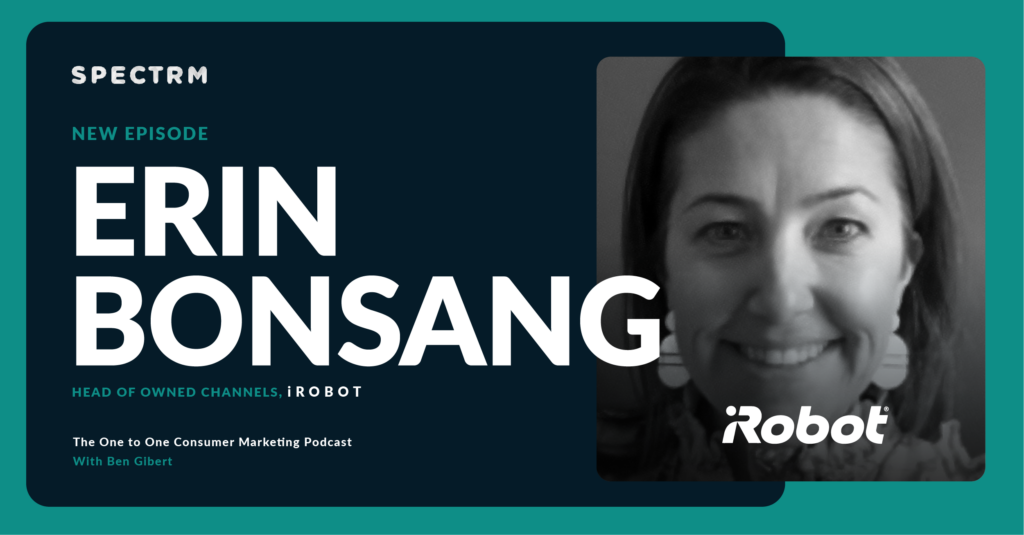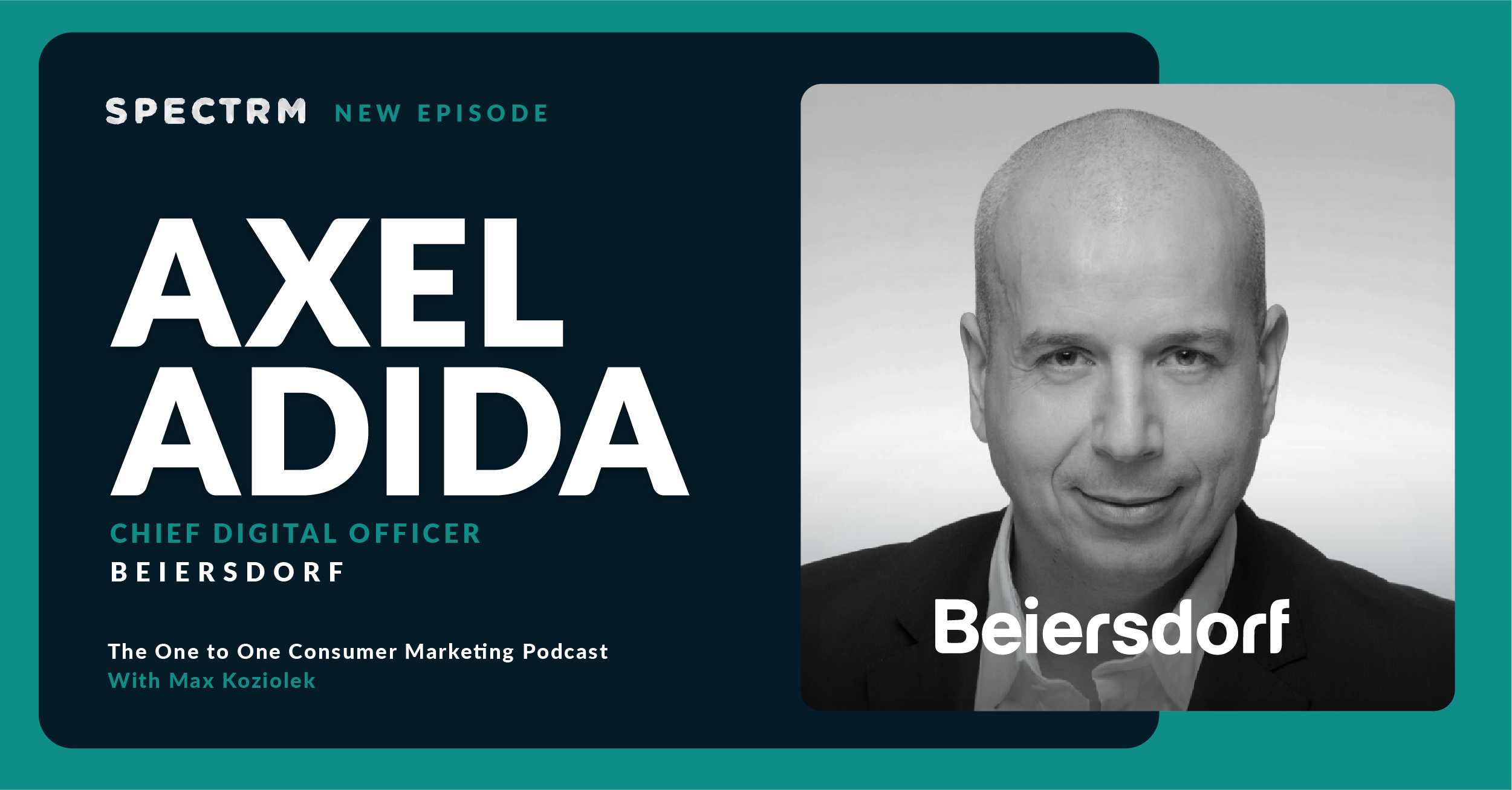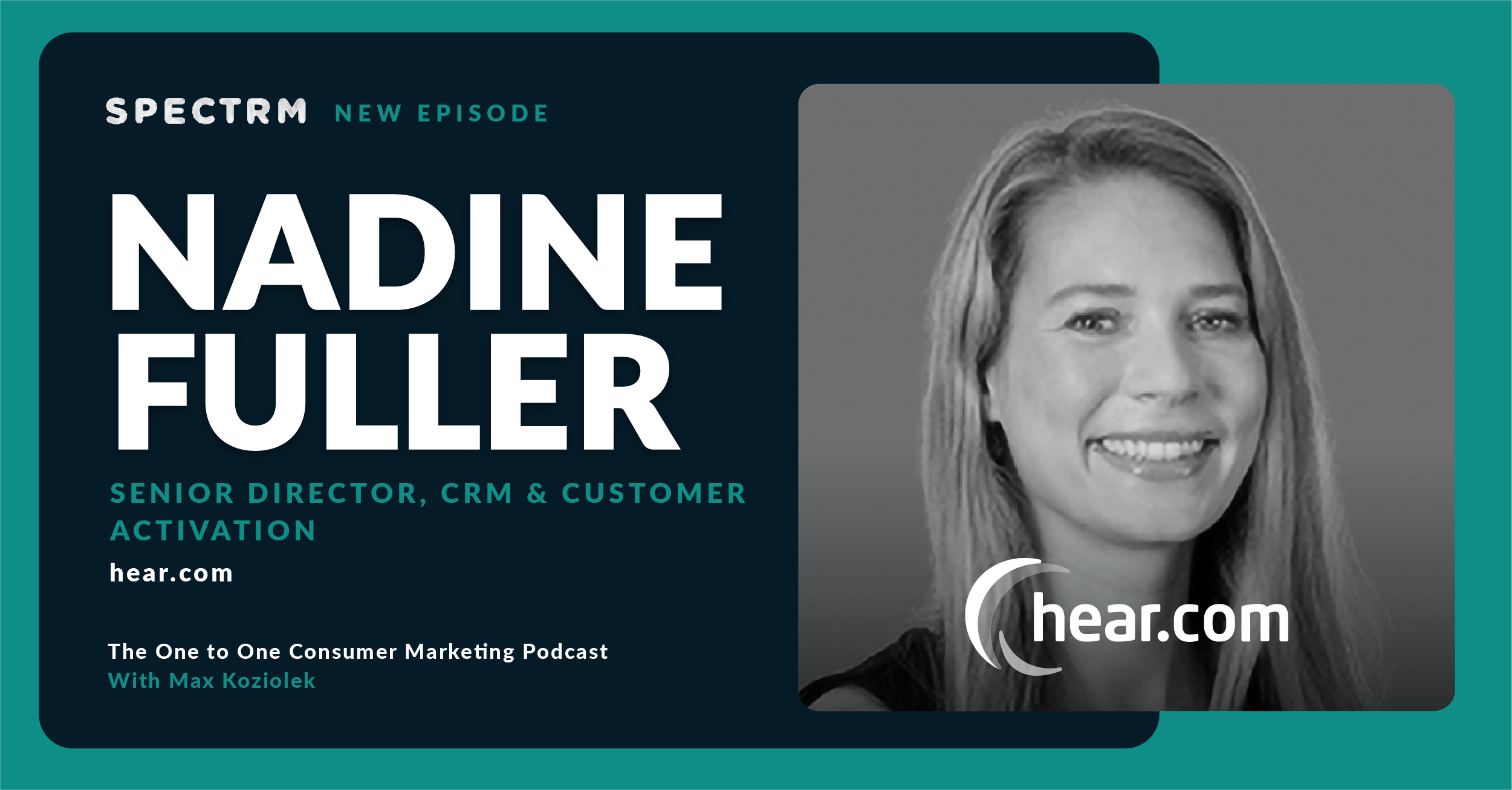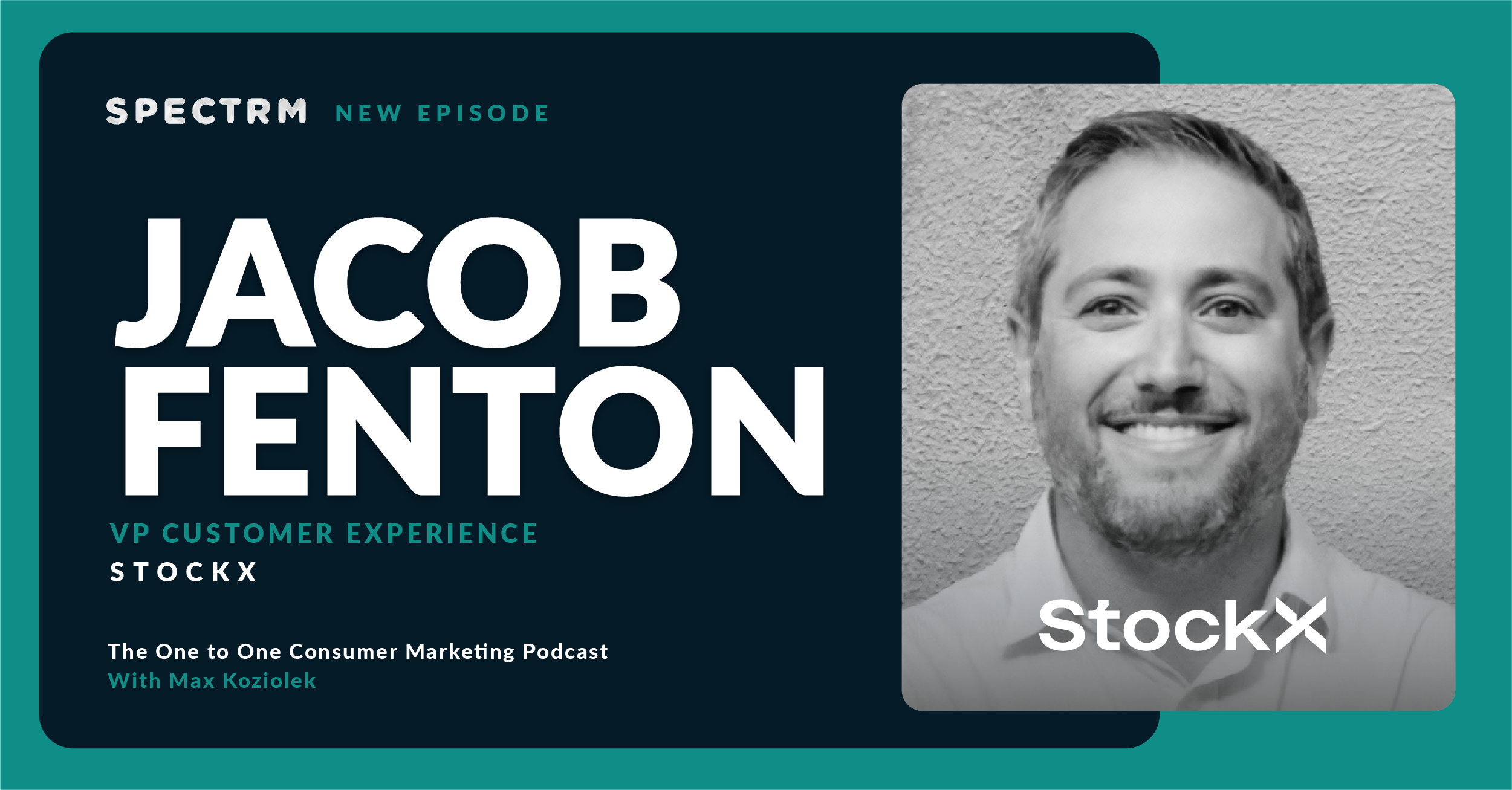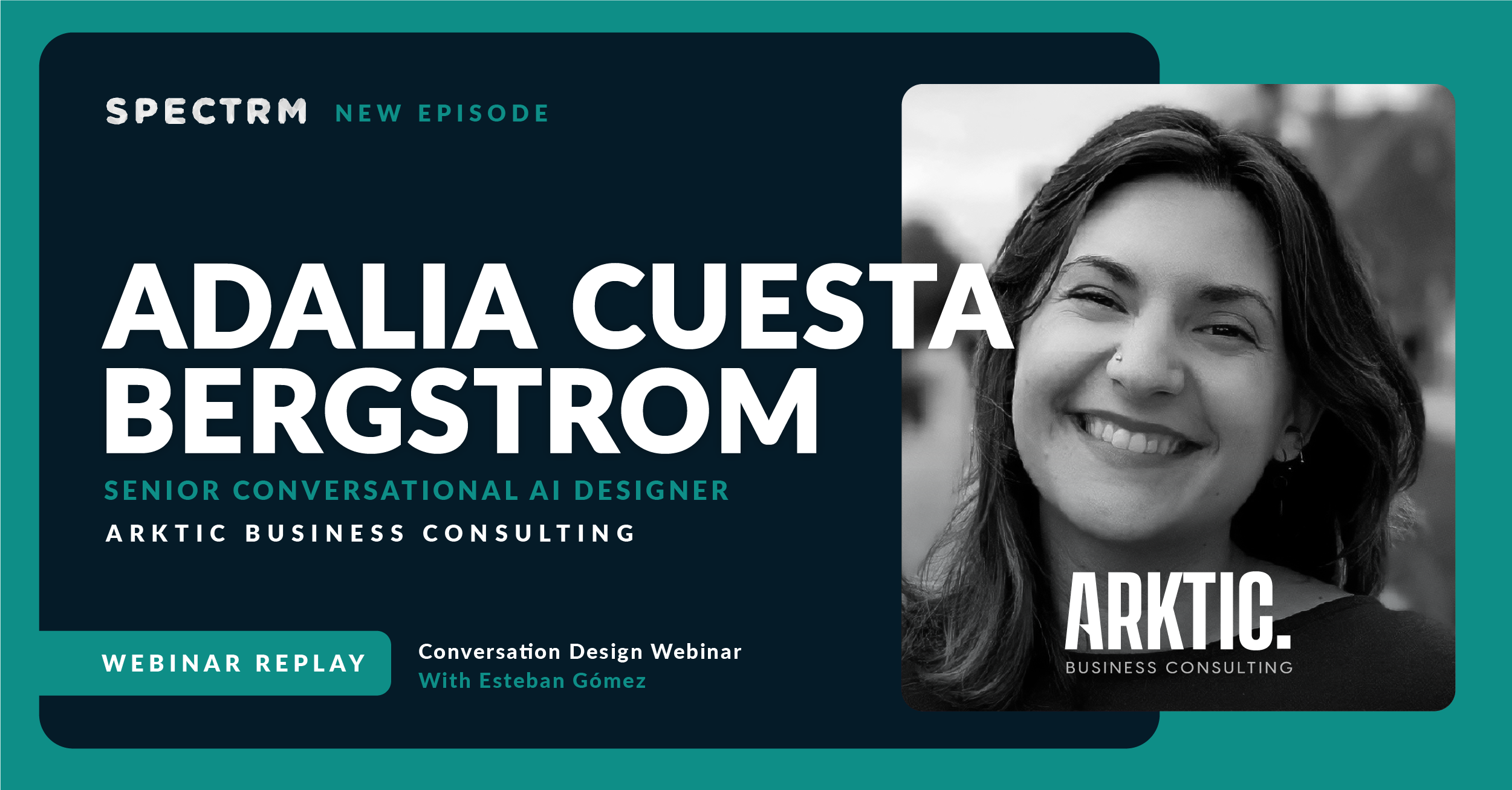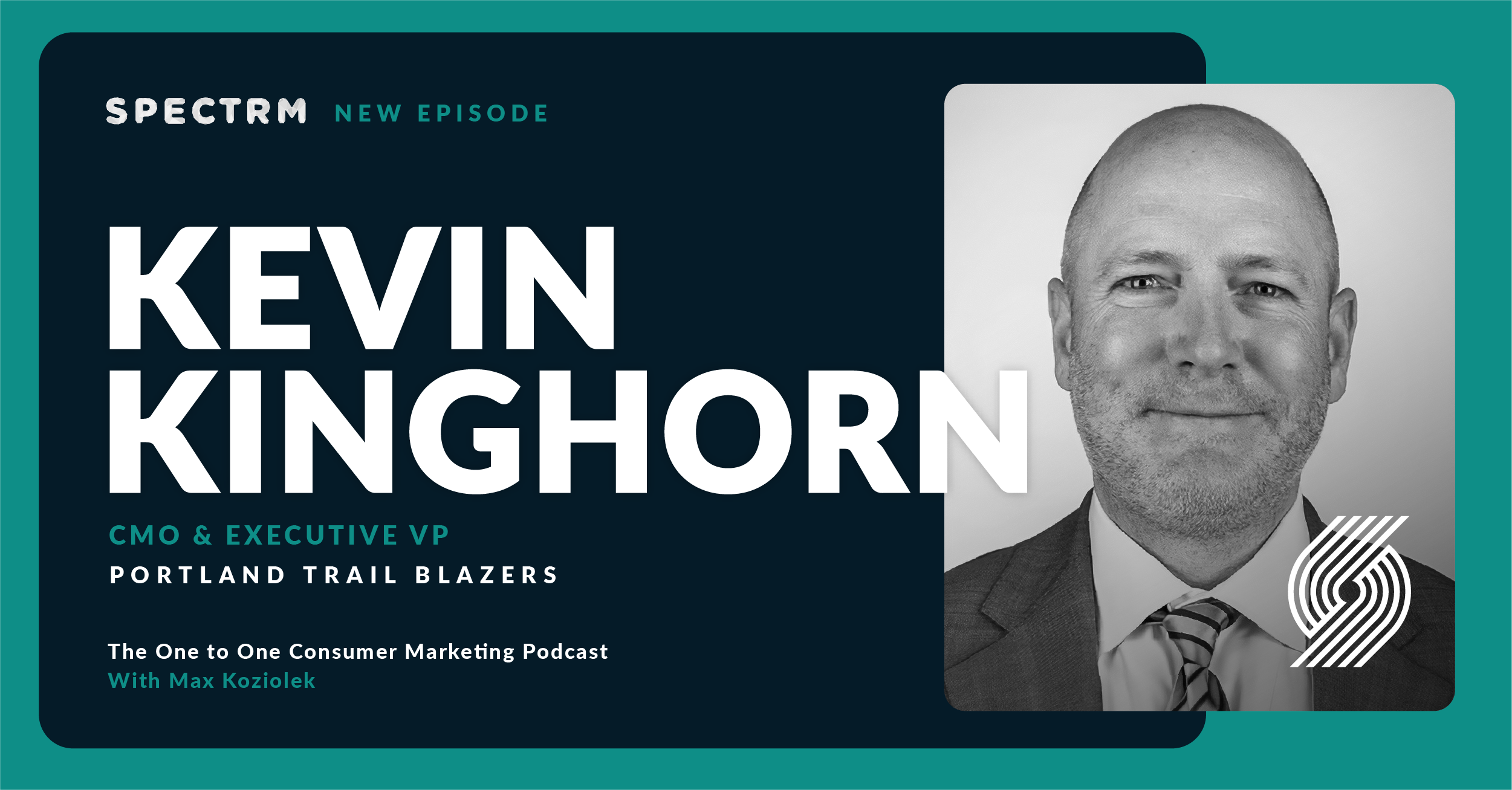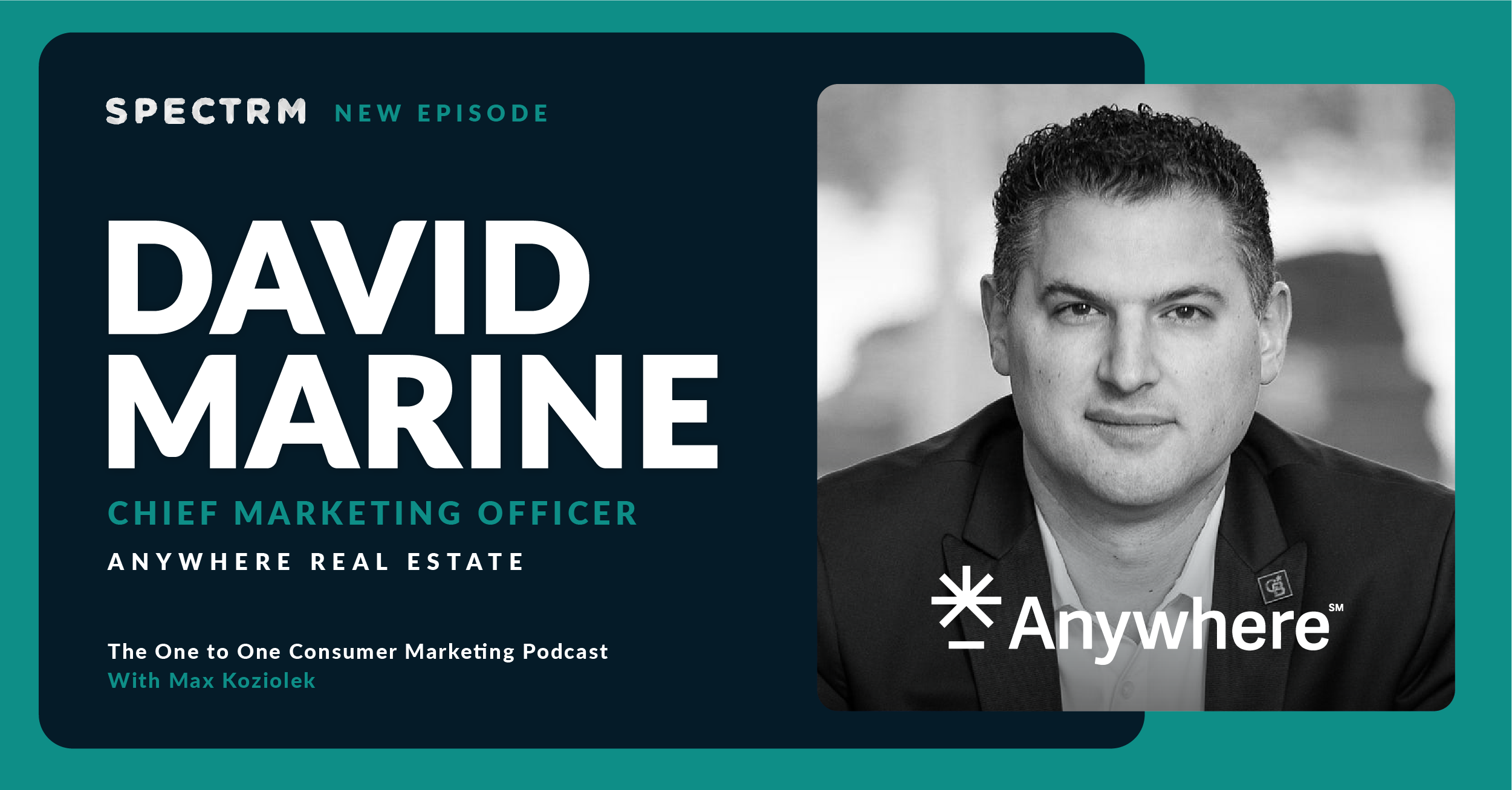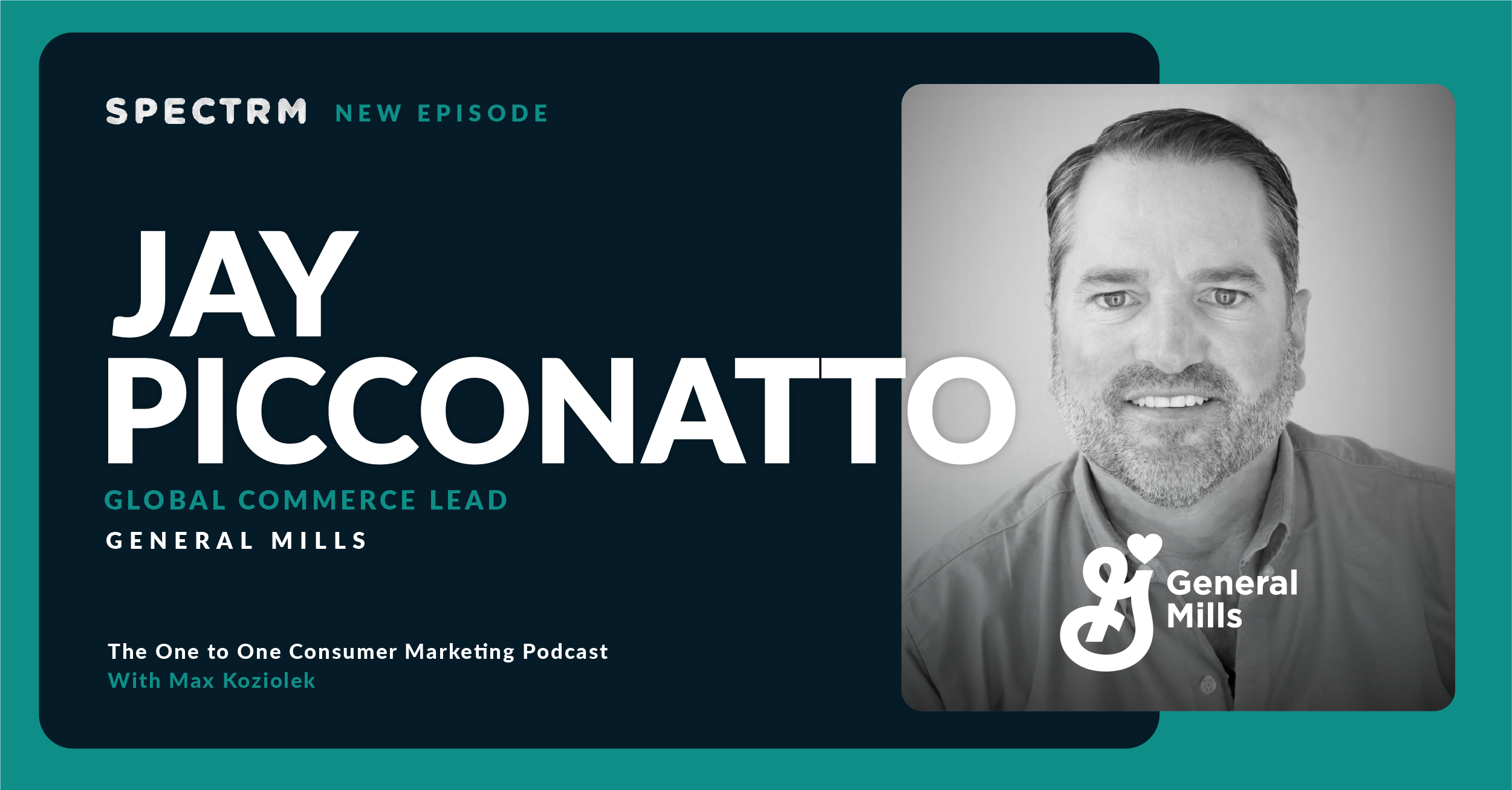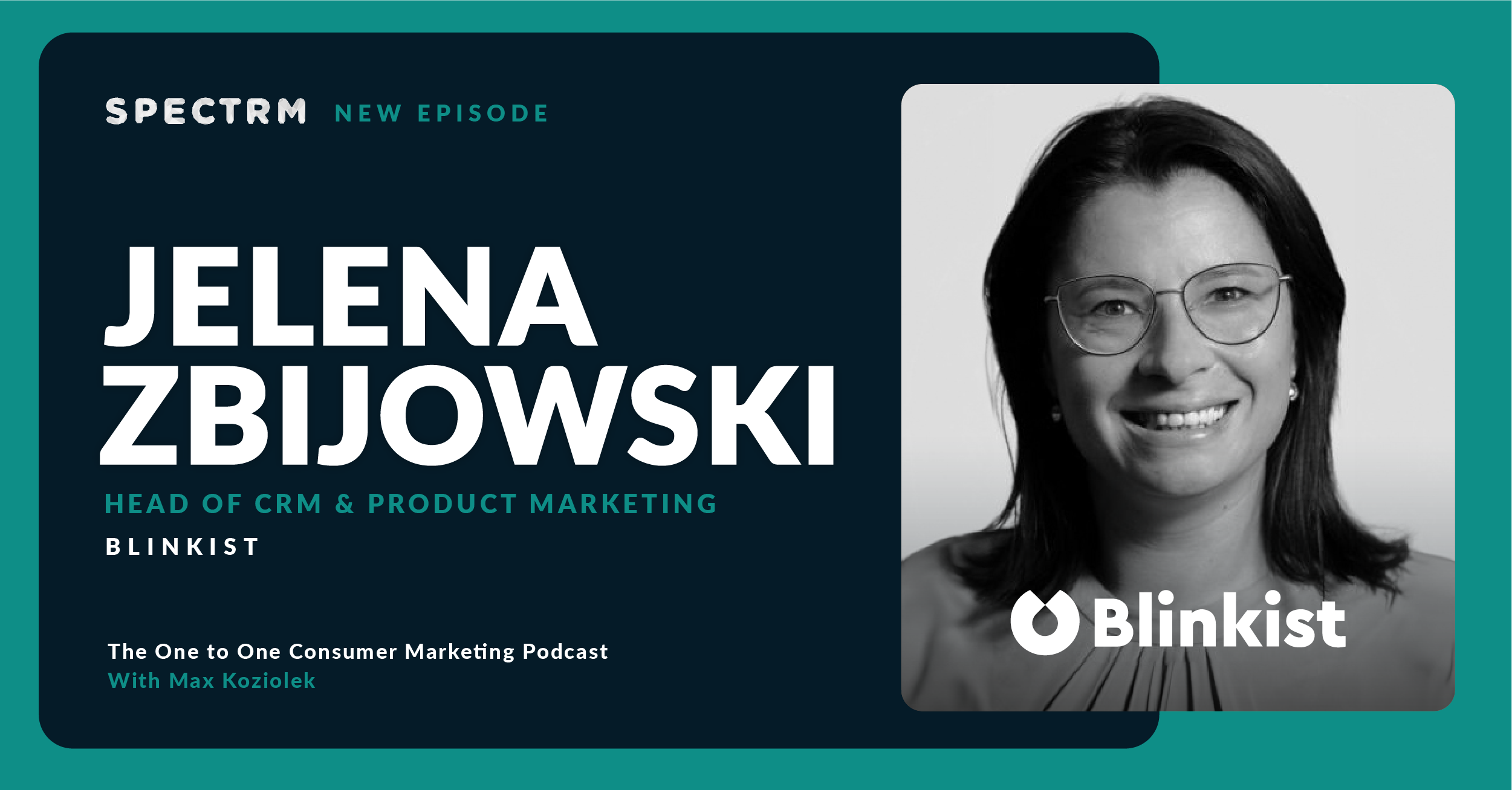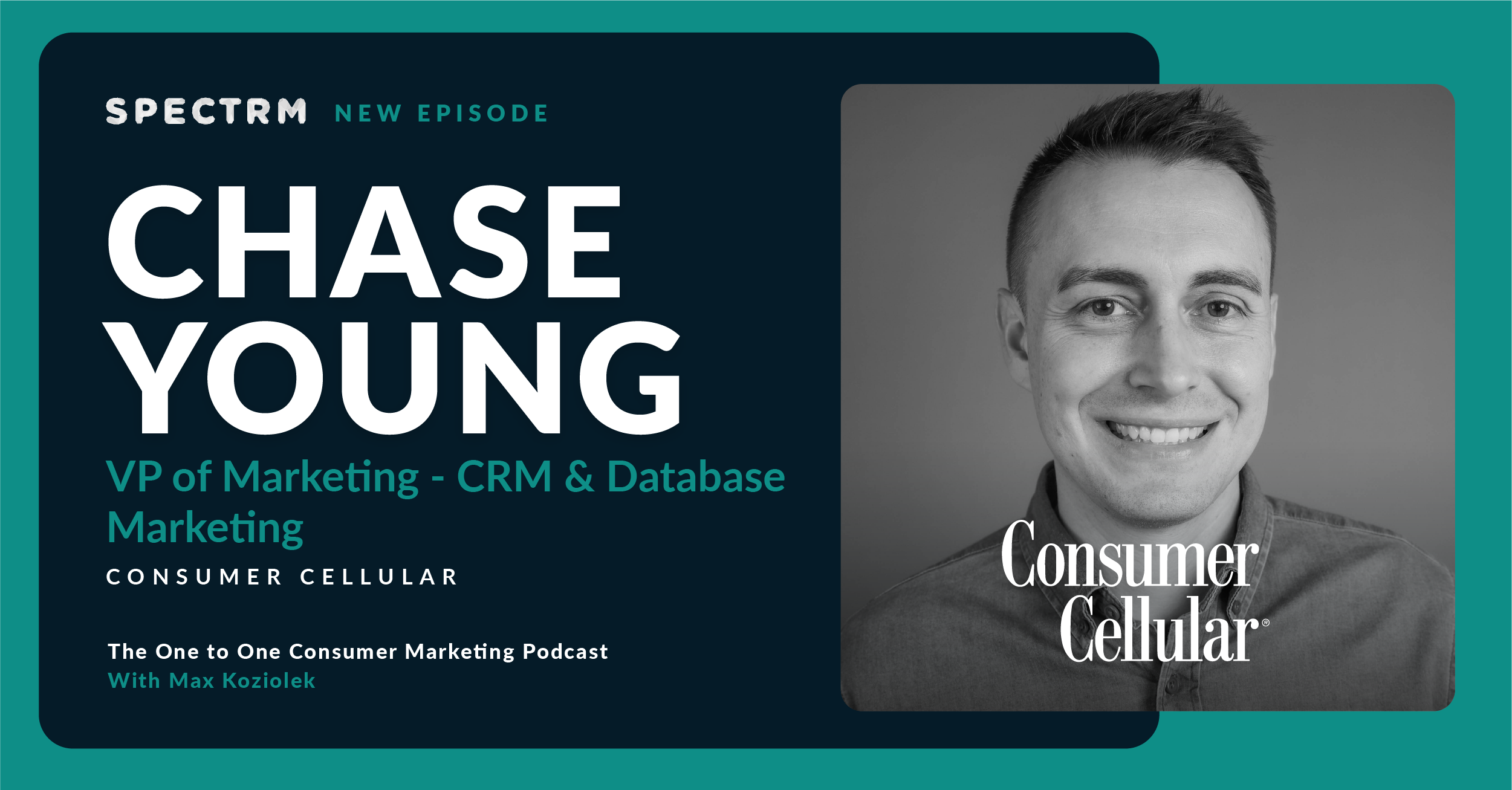Summary
Ben speaks with Erin Bonsang, Head of Owned Channels, Web, eCommerce & CRM, at iRobot. Erin has over 20 years of experience in consumer marketing and has worked with a variety of brands, such as Hasbro.
During the episode, they cover a range of topics, including retention and loyalty marketing strategies, onboarding and reengaging customers in the robotics industry, personalizing the customer journey, the power of data and storytelling, and more!
Topics discussed
- Why Erin describes the state of digital marketing as frenetic and her advice for marketers to build on their foundation in the fast-paced industry
- The importance of continually improving channels, messaging, target, and experiences in consumer marketing
- The importance of shifting and pivoting quickly in retention and lifecycle marketing
- Marketing is essentially a feedback process, and the faster you can close that feedback loop, the more you’re going to perform as a marketer and as a brand in a very competitive space.
- Delivering value to customers over the long term in the robotic vacuum cleaner category
- Understanding customer personas to drive usage and additional purchases
- The benefits of conversion rate optimization and personalization for improving customer experiences
- Direct-to-consumer shopping and the importance of the customer experience
- The role of experience as a differentiator in the next five years
- Erin’s advice to marketers is simple yet powerful. By relying on data, using the information at their fingertips, and being agile, marketers can navigate the rapidly changing marketing landscape and achieve success
We look at the phase of the customer lifecycle, channels that drive engagement, and persona to understand how they come together. Our audience of 12 million users all clean differently, so it's important to consider traditional metrics like retention upsell and cross-sell alongside these unique factors.
Guest biography

- High energy Global Brand Digital Marketer with deep experience creating experiences that prompt action. Heightened experience/ SME across Web Strategy | eCommerce | CRM & Loyalty.
- B2C | B2B Leader and Builder with agency and brand experience with Fortune 500 players in Automotive, CPG, Finance, Legal, Military, Robotics, Travel & Toy categories.
- In my current role, I lead experience strategy and execution for iRobot’s Direct to Consumer business and owned channel ecosystem. My primary focus and goal is to improve the shopping experience and make it EASY, FUN and SEAMLESS to engage & purchase.
- Super power: Strategy | Execution | Motivational Leader | Executive Presence | Growth Mindset & Adaptability.
Company overview
iRobot®, the leading global consumer robot company, designs and builds the world’s most thoughtful robots and intelligent home innovations that make life better. iRobot created the home robot cleaning category with the introduction of its Roomba® robot vacuum in 2002. Today, iRobot is a global enterprise that has sold more than 40 million robots worldwide.
Industry: robotics | www.irobot.com
Subscribe to the podcast newsletter
Transcript
00:03
Ben Gibert
Hey, everyone, and thanks for listening to and watching The One to One Consumer Marketing Podcast. Today I’m speaking with Erin Bonsang, who is Head of Owned Channels, Web, Ecommerce, and CRM at iRobot, which is a global robot company that has sold more than 40 million robots worldwide. You might have one in your home. Erin, thanks so much for chatting with me today.
00:23
Erin Bonsang
Thanks, Ben. I’m thrilled to be here and talk about the state of marketing.
00:27
Ben Gibert
Yeah, I’m excited to get into a lot of topics today. Before we dig in, can you tell our listeners more about yourself, kind of your background and how you ended up at your current role?
00:39
Erin Bonsang
Yeah, sure. I’ve been in the space for over 20 years, and I’ve had the luxury of working on a variety of different brands, but I actually started in the consumer segmentation and targeting side of the business right when I got out of school. I was working for a company called Epsilon, and were doing a lot of targeting for one of their fundraising clients, Special Olympics. That proved to be like an amazing groundwork for me to understand more about targeting, recency frequency, understanding acquisition, and their model was all about acquiring new consumers to donate to the cause and then basically continuing donations with existing owners. And so that was awesome work. What I think I discovered coming out of it was really to understand that there are multiple facets then of marketing and really where did I want to play. Where I landed coming out of that is I wanted to be closer to the customer strategy, the execution, the actual front end experience.
01:38
Erin Bonsang
I made the move actually to agency side, where I spent about 10 to 15 years on and offered a variety of different agencies in New York and the greater Boston area. After doing that for a while, I ended up then making the move to brand or client side, which is really where I’ve been for almost the past ten years. Started in the toy space working for Hasbro. They’re based here in the northeast and worked on they were going through a digital transformation heavy focus on engaging with their own channels, and then joined iRobot in 2019 just as they were starting a digital transformation. I’ve been lucky that I’m able to play in a bunch of different areas of marketing, and it’s super fun. It’s constantly changing.
02:20
Ben Gibert
Yeah, I believe it. You mentioned also digital transformation at two of those companies. I’m sure that’s a topic in a lot of places that you’ve been at. Also that switch between brand side, agency side. A lot of marketers I speak to on the podcast also make that switch at one point in their careers. I’m curious for you, what drove that? Did you decide you wanted to just go in house to focus on a brand, or was it what kind of made the shift for you.
02:48
Erin Bonsang
Yeah. What ended up happening is it was actually a boss that I had worked for on agency side, had been recruited to Hasbro to lead some of their digital transformation. As he was building out that team, they reached out to me. That was how I made the parlay. The iRobot role actually was contacted by a recruiter and that’s how I ended up there. It wasn’t a, hey, I’m done with agency, I want to move to brand. I will tell you, it has been such a phenomenal learning experience because I think on agency side, what I realized is I had a purview into one element of the overall business. Now being brand side, there’s just so much more complexity, honestly, that I didn’t have an appreciation for. I had a hard time selling in work. Now that I’m on the brand side, I understand all of these other levers that were often at play behind the scenes that I didn’t know about.
03:43
Erin Bonsang
I now just have a better understanding of how decisions are made, how do activations actually come to life and what are those requirements in order to align an organization to drive progress?
03:54
Ben Gibert
Yeah, I believe it. You get so much more insight into, like you said, all of the different components that make up a customer experience, which are hard when you get just an isolated glimpse at that when you’re at the agency side. Also sounds like you went through a, I would say typical journey for marketers in the sense that when you do great work, when people go to new companies, they bring you along with them because they want to keep you.
04:20
Erin Bonsang
It’s a small world then. It’s a super small world. I think that’s so important is building those relationships because you never know who you’re going to work with again or more tangentially, who you may work with through the three degrees removed.
04:38
Ben Gibert
Yeah, like you said, very small world.
04:41
Erin Bonsang
Super small world.
04:44
Ben Gibert
You mentioned, obviously, you’ve been in marketing for a while, you’ve been part of digital transformations. How do you summarize kind of the current state of consumer marketing today? What does it look like to you?
04:58
Erin Bonsang
It’s frenetic is how I would describe it, because I think the rules, the playbook kind of had to be thrown out the window with a pandemic, which is good, but that doesn’t mean all elements of the playbook are thrown out. I think what it just comes down to is you’ve got to look at the channels that you’re using. You’ve got to look at your target, you’ve got to look at your messaging, you’ve got to look at your experiences. You have to continually improve them and say, like, are we doing the best that we can here or can we do more? I think that it’s easy to assume, like, once you’ve got that foundation, you build on it. I think what has really become clear over the past three to five years is like that foundation has totally changed as well. So it’s super frenetic. I love that.
05:44
Erin Bonsang
That’s what feeds me. That’s the excitement of what is marketing. What I think I’m going to do on Monday and Friday usually totally change. That to me is really energizing because I think we’re in an environment right now where you could put forth the best laid plans on a PowerPoint, but until you get out there and you actually see what’s happening, you don’t really know what your plan is like. You don’t really know how effective the strategy is and you just have to be willing on the moment to say that made sense on paper, it made sense in an excel, but it’s not making sense in reality. I can stick to it, but I don’t know what that’s going to get me or I can pivot.
06:20
Ben Gibert
Yeah, I think frenetic a great way of describing that and also that as marketers, by our very nature, we should probably accept the fact that everything is a very rapid pace of change and we need to be willing to shift and pivot very quickly. You said, the best laid plans can be made to waste very quickly in a rapidly changing environment. Marketing is really ultimately just a constant feedback process and improving and iterating so I think staying in tune to that is so important. Speaking of kind of staying in tune to the current reality, I think what I’m seeing a lot from the people I speak to is that retention and lifecycle marketing is becoming like a very big focus right now, as I’m going to have to say, doing less with more. Everyone’s sick of hearing that, but I.
07:10
Erin Bonsang
No, but it’s true.
07:11
Ben Gibert
Yeah. How does that fit into your company and what you’re doing? Kind of how do you think about retention?
07:17
Erin Bonsang
Yeah, so there are a couple of things and maybe it would help me frame for the listener. Our category, we are in the robotic vacuum cleaner category. We essentially founded and built the category. There’s obviously other players that are out there today, but it’s important to state that these products, they’re at a high price point, anywhere from three hundred dollars to one thousand one hundred dollars. It’s a lot of money and it’s a big investment right now and it’s a big investment over time. You have the products for three to five years. It’s not a one and done. The products, they’re integrated into your daily routine, they’re cleaning your kitchen every day, maybe multiple times a day. We think about that customer lifetime value, it’s a long time. What we have to do throughout that process is continually deliver value. There are a couple of ways that we look at it we’re looking at the phase of the customer lifecycle, meaning owner, onboarding owner, engagement, usage, retention upsell, cross sell, very traditional things.
08:23
Erin Bonsang
We’re then also looking at channels within our own properties, what channels are really driving that engagement and usage and how do those things come together along with persona? We have an audience of upwards of 12 million users using our products, but they’re all really different, and the way that they clean is really different. An example of that would be is you have some, I would say, clusters of people. They don’t ever want to touch the robot. They just want to use their app for everything, set up a schedule, set up a map, set up keep out zones, and have it all run automated. You have other people that never want to go into the app and they just want to press the clean button. All of those things are valid and super useful. What we have to think about is how do we talk to those people differently?
09:13
Erin Bonsang
Ultimately, what’s really important is that they’re using their product. That’s the end game, right? Because the more that you use the product, the more that you see all the work that this robot is doing for you. I was running my I seven today, and I was just emptying the bin and I got to see all of the dust from my dog that was on the floor. Now, that may sound kind of gross, but it’s really important because you see, while I was walking in this mess and now I’m seeing the machine doing that for me. It’s the target, it’s the channel, it’s that overall usage and where they are in the lifecycle. I think there are a couple of things that we’re really learning. One is we have to nail onboarding. So our products are robots. People have a lot of different expectations around a robot.
10:00
Erin Bonsang
They say like, oh, bet I bought a robot. It should be able to do X, Y, or Z. The way that I describe it a lot to people, it’s like it is a robot, but you’ve got to help give it some training wheels along the way. The best way to think about it initially is almost like a pet in the sense of you’ve got to take it out of the box, you’ve got to set it up, you’ve got to let it run your house. Putting that investment in upfront will help you make sure you get the best out of it on the other end. If we don’t do that right, what we find is that users aren’t setting the schedule, they’re not running the machine, they’re not seeing all of these additional features that we know can help improve their quality of life. So we got to nail that.
10:41
Erin Bonsang
The other piece within that, what we found is that the frame of reference many people may have is like an upright vacuum. It’s like, I go into the closet, I pull it out, I plug it in, I run it, my floors look clean, and I’m done. This is a different scenario of how you actually use and interface the product. We have to teach you differently. So it’s setting up onboarding. It’s things like if you’ve stopped using, well, why did you stop? We’ve started to identify, are there robot factors or lifestyle factors? Lifestyle factor may be, did you move? Did you have a baby? It could be as simple as like, did you rearrange your room? Now the connection with the WiFi is off. How do we start to see that prompt and say, hey, Ben, it looks like maybe you have an issue. Let us connect you with some resources.
11:29
Erin Bonsang
Onboarding is critical. We also then look at things like once you’ve hit a certain number of hours of usage or missions clean, you may be ready for that next product. I think for us, what we want to make sure is we’re telling Ben, what’s the right product for you based upon how you’re using the product today? Otherwise, it’s just marketing spam. It’s not relevant. It’s like it’s got to be more personalized. Kind of a long answer to a short question, but it’s complex in terms of how we think about it.
11:59
Ben Gibert
Yeah, and I think you touched on so many important things there too. The high average order value that you have means you really have to create a great experience for those people. You’re ultimately trying to increase usage in order to increase lifetime value because hopefully there’s an opportunity to upsell and cross sell them new homes, new rooms, new floors. I’m sure there’s tons of scenarios you have mapped out, too.
12:24
Erin Bonsang
There are.
12:24
Ben Gibert
I like how you broke out into that lifecycle phase targeting channel and who is the persona? Maybe diving into that a tiny bit. Can you it sounds like you’ve identified kind of, I guess, key events or areas in which you might think, okay, usage is going to drop here, like trigger points, basically, in that customer journey. What are you identifying? You mentioned a few of them. Also how are you then acting on it to really try to reengage those different personas?
12:54
Erin Bonsang
Yeah, so we have a pretty good understanding of how robots function within the household. We have a lot of cues and data points to help us then start to understand if the user is struggling. I think the simplest place is patterns. If we’re seeing that you’re running every single day and then suddenly that stops for a week, that’s an indicator that something has changed. Now it could be an indicator that you as a user made that change or something else happened. And so an example like that. What we’re starting to think about is, do we queue some type of outreach to you through email that says, hey Ben, we seem that we’ve had an issue, can we help you out? It’s things like pattern changes, it’s things like errors. If you had a bin full error and you haven’t run in a week, that’s probably a queue of like, you probably just need to empty the bin, but maybe you got busy with other things in your life and let us give you a little added value.
13:54
Erin Bonsang
One of the things we’ve also worked on pretty hard is within our in-app experience, we call it coaching and just really helping a user as they’re running into issues, troubleshoot through those issues. I would say it’s looking at that robot data, but looking at it over time for trends because the one offs can be they can send you down rabbit holes that are not meaningful or relevant.
14:17
Ben Gibert
Yeah, I can totally see that. Like, they might have just gone on vacation for a week and it might not be the same type of trigger correct personal story. It’s also true that every time so I have a robot vacuum and I also have a cat and whenever I do open that little bin every night to empty it out, I’m always amazed by how much is in there. That does create like a nice a-ha moment.
14:39
Erin Bonsang
It does.
14:41
Ben Gibert
In terms of the level of I think you’re working with a level of data that’s very interesting because you have app usage data, but you also have the actual data from the robot and the activity that’s going on there, which gives you such deep insight into how your product is being used. I’m sure it also creates some pretty big challenges in terms of how you’re identifying those moments in the customer journey and the trigger points, essentially. Can you talk through what you see as the biggest challenges when it comes to retention and loyalty?
15:11
Erin Bonsang
I think the biggest challenge is one that most marketers have, it’s having that truly unified view of their customer across the product. In this case, it would be the robot, the app, but then also within marketing and how do all of those things come together so that we fully have a view. I think the desired end state would be we understand how Ben is interacting with the product, what communications Ben is receiving, but then also more importantly, has Ben called us with an issue? Because if Ben has called us with an issue, probably not the right moment for us to suggest upgrading Ben to another product or cross selling him and say into a mop, we don’t want to do. That, I think is the hardest piece because to your point, these are high AOV products. We have to deliver a premium experience pre, during and post.
16:01
Erin Bonsang
To me, a key enabler to that is like I have a truly 360 view of who that customer is, and at any given moment, I can understand their sentiment with us. I would say we’re making progress against figuring that, but we still have a lot of work to do there. We also want to ensure that we’re respecting the privacy of our customers and that we’re pulling in data that’s only relevant for the purposes of delivering them more personalized communication. There’s a balance there of not all data is created equal, not all data is necessary. It’s like, how do you balance those two things, especially as we’re going into a cookieless world. What has fascinated me about this experience with iRobot is you’ve got the physical robot, you’ve got the app on top of it, and then you’ve got that experience across all of the channels.
16:52
Erin Bonsang
I had all of that at Hasbro, but what we have here is the intelligence of the robot mixed with the intelligence of the app. Those two things working together is really powerful, which gives me, as a marketer, I would say huge runway to tell stories and talk about things differently. An example would be is most consumers name their robot. There’s a lot of fun there in terms of how people name their robot. Like, what’s the most common name? I think it’s Rosie, but there’s personification with the product, so there’s a lot of arms and legs there to talk about the experience of ownership that I’m really trying to push harder in this role.
17:35
Ben Gibert
Yeah, I love that. That also fits kind of with your pet analogy of like, this is another addition to the family. To some extent. They’re an extension of that. You mentioned a few things as well. Unification of your view of the customer, kind of the engagement layer that exists that’s on top of that and also privacy concerns. You’re collecting a lot of data. Obviously, you’re collecting data about people’s homes, too, in terms of the mapping and everything. I’m sure that gets complicated pretty quickly. How are you managing that complexity in terms of privacy? Also, how are you kind of engaging people in channels in a way that feels kind of privacy safe?
18:17
Erin Bonsang
I think there’s a couple elements of it. The first is proceed with caution and do no harm and having that mindset and ensuring that when we think about things like our overall privacy policy experience, how do we talk to our consumers about what that privacy experience looks like? Right now, I would say what we have covers the bases in terms of privacy policy, but what we’ve also started thinking about is how do weave that more into the journey so that we’re able to transparently help consumers understand how we are using that information. We don’t sell any consumer information much like other brands. We don’t do any of that. It’s really more of how are we pulling in key data points that feel relevant to you and we’re doing it in such a way that feels safe and not creepy. I would say it’s certainly a work in progress then it’s one that we’ve identified as a critical initiative for us this year to really better map out what that experience looks like.
19:15
Ben Gibert
Yeah, and I think that’s something we’re seeing too with a lot of our customers is this idea of if you provide value, people are often willing to provide their data and it’s just about creating a transparent communication around that and being very open and honest. You’re already on very different footing than if you’re tracking people everywhere and kind of snooping on them across. There’s very specific ways that you can create a much better framing for the whole privacy issue. It also is what’s going to impact your ability to personalize and your ability to kind of create a great brand experience for them as well.
19:49
Erin Bonsang
I think the other piece is timing. The timing in the customer journey around where you talk about privacy is really important. One of the things that we’ve seen is the products do require care and feeding post purchase, just like any investment of that size. There’s a balance of how much you talk about that pre sale during post because it can start to feel overwhelming. One of the things that we’ve really tried to balance is it is a robot and there’s a baseline expectation of what people think a robot can and can’t do. It’s not uniform, it’s just based on what people have seen in the zeitgeist. What we’ve also looked at is where pre and post do we talk about it and a lot of it is as consumers start to see the benefits of what those recommendations are, their comfort level changes. If you don’t message it the right way and serve it up at the right time in the customer journey, it can be off putting.
20:49
Ben Gibert
Yeah, that makes a lot of sense. Practically speaking, is that kind of based on the data that you’re seeing in terms of usage, that’s when you decide to trigger certain messages around what types of data you could collect or that’s when you kind of automate that interaction.
21:05
Erin Bonsang
It’s more about I would say what we start to see is when you talk about privacy a lot during presale, if you don’t give the specificity, it can make people concerned. As they start to use the product and see the benefits of it, they become more comfortable with it. So that’s kind of the nuance. It’s looking at the marketing language of how you talk about it and make sure that it’s matching those expectations.
21:32
Ben Gibert
Yeah, that makes a lot of sense. Personalization you’ve touched on how you do that. Obviously both pre and post sale. How are you doing that in terms of connecting one to customers? You mentioned these different personas, like different usage types, the fact some people name their robot, some people don’t. How are you then kind of building that experience and connecting one to one?
22:00
Erin Bonsang
Back up a couple of baseline. One is our catalog is probably not on the same scale as, say, at Nordstrom. You look at the mix of products, especially for pre-purchase to personalize, you’re looking at 10 to 20. You think about that personalization by product, it’s simpler than, I would say, a traditional apparel or fashion retailer. What we’re really focused in on is personalizing for our two to three course segments and making sure that we’re talking to the purchase drivers for those core segments. Some of it is, there are just differences in motivators. Right. So, not surprising, someone who owns pets is likely a target for our products. Right. Because of the section and product features that we have that are targeted at pets, like object detection, object avoidance, the personalization, there is visuals and copy that pay off those motivators. Post purchase, it’s different in the sense that we know in-app what products you have, we start to better understand how you’re using the machine.
23:10
Erin Bonsang
The personalization that happens there is really one-to-one in terms of your coaching experience. There’s baseline activities that we want you to do. Set up a schedule, map your house. If there are certain zones of your house that we know, think below your kitchen table, that get dirty every day, let’s set up a cleaning zone there. You’re going to clean your house every day at 6:00. There it becomes really personalized and one-to-one based on your robot, your usage, and your overall cleaning patterns. So it’s a little bit different. I would say. Pre purchase, we are looking across web and email to personalize based on what products that we think are right for you mixed with those target demos.
23:54
Ben Gibert
Yeah, I love that. Just and it’s also I’m sure it gets complex, but the simplicity of like, okay, what is the buying trigger here? And then what is the usage trigger? Really personalizing the journey to ultimately increase adoption for you? What channels are you seeing work well as you’re doing this? Both, I guess probably more post sale in the retention space. I’d love to understand how you’re actually engaging with people. Do you go beyond the app? Do you go beyond email? What are you seeing?
24:23
Erin Bonsang
Yeah, so it’s a great question. There are two channels that we’re seeing a ton of success on today, which is email and app. When email and app work together, that’s where the greatest power lies. The reason for that is we know that users are checking email more frequently than they’re checking app. In some cases, if a user has the standard schedules, maps, everything set up, they may not actually need to go into their app. That frequently so we’re able to leverage email as that awareness driver, notification driver, et cetera. Really, where we’re seeing success is highly contextual, benefit driven. When I say benefit driven, it is, here’s a recommendation for you, Ben, based on the product that you have, based on the usage that you have, based on a trigger, we want you to consider X. That X could be we think you should map another room.
25:15
Erin Bonsang
The recommendation could be, what, it looks like your rollers only have 10 hours of usage left. It might be time to upgrade. We’re showing you the data in-app that shows, hey, the average roller is I’m making it up, expected to get 200 hours of usage. You’ve used 190. It might be time to upgrade. If we give you that reasoning versus saying buy more rollers, we see a lot of success. Where app and email are working together is that we’re using the data to inform what we’re telling you versus, hey, we’ve got this product on sale. I think app is really interesting because, as I said, some consumers, they prefer the old school clean button. We have consumers that want the app. There’s a lot of great experiences in pp that when we can merchandise them to you at the right time and then back them up with email, we see some great engagement.
26:09
Erin Bonsang
We’re thinking about those tailwinds and how do we push those further in 2023? Because I think I’m sure you’re hearing from some of your other clients, like, costs of acquisition are going up everywhere. Because of that, how do you lean into the channels where you already have an engaged consumer base? We’re really lucky we have that through app and then also further amplified through email.
26:33
Ben Gibert
Yeah, I love that. And that’s essentially good marketing. Doesn’t feel like marketing, right? When you’re offering value through something like a very contextualizing, the reasons for the reach out through the data point of their own usage, I think it feels much more personal. It feels like you’re actually offering value, like you said, versus just, hey, here’s another product, why don’t you buy it? That makes a lot of sense as far as maximizing the lifetime value that you can get from a customer, maybe. We’ve talked a lot about what you are doing at iRobot and a bit on your past, looking forward. What is kind of a trend that you’re really excited about or kind of a technology that you think is going to be big in the space?
27:15
Erin Bonsang
Yeah, I mean, there are a couple of things. I’m certainly not a good forecaster. I think no one would have known a year ago that ChatGPT would blow up the way that it did. I certainly think AI is here to stay and won’t go anywhere. And so thinking about how do you use AI to accelerate decision points or conversely, remove friction points. I’m a big believer of like, you can experience growth just by decreasing mental load for customers. I think that’s one of the biggest things that we’ve seen is that the bar for what is considered mental load is really low right now. Meaning the day to day experience of going through life post COVID is really hard. It’s just really hard. Little improvements throughout the customer journey can actually add up to a lot of growth. At a time maybe where other channels can’t.
28:05
Erin Bonsang
Like if you just look at throughout our customer experience, how do you make things easier? And I’ll give you an example. We discovered that within our cart experience, we had a promo code button that users were actually thinking that was how they submitted their order. It was causing a lot of friction within our sales teams because they said people are trying to submit their order through the promo code, it won’t go through. Why isn’t the cart working? We realized that the design just of that experience and button was costing us money. We’ve now rolled out a new design and now that’s become we’ve reduced that friction. That helps with things like conversion rate. It’s finding those small things along the way. I don’t think that will go away. I also think that delivering I would say thinking about experience as a differentiator I don’t think will go away.
28:56
Erin Bonsang
I think by and large, consumers expectation, especially for high price points, are really high right now. If you don’t meet at every step of the way, there’s so many other options that are out there that they’ll likely abandon. The more that you can focus in on those improvements and demonstrate that they’re working in terms of pre post performance but then also, hey, if were to do this across X markets, or if were to do this across X channels, this is what it could mean. We’ve started to see a lot of success there. That’s of a mindset shift, I think, because on the surface, it’s not a new technology. It’s not a new technology. It’s really more of optimizing within what you have.
29:41
Ben Gibert
Yeah, I love that. I think it’s our job as marketers not just to obviously make those small tweaks, but to be able to report on them. I think that the power of compounding when it comes to conversion rates across your customer journey is truly pretty amazing. You put that in front of executives of a board at a company, it creates a very powerful narrative for why you should invest in things like conversion rate optimization at your different stages. Also that personalization aspect I think is one that shouldn’t be forgotten when essentially there is so much competition everywhere and buyers really have the power they can get all of the information about all of these products and so brands that differentiate themselves through amazing experience are the ones that are going to win their market. It’s very clear, when you do things like conversion rate optimization, you’re benefiting the business through a specific conversion point improvement.
30:36
Ben Gibert
You’re also improving the customer experience, too. Because I’m sure not that many customers were loving the fact that they were trying to check out and they couldn’t check out because they had the promo code box. I think those are two examples that work very well hand in hand. I’m sorry. Go ahead.
30:54
Erin Bonsang
Well, one thing I’m going to mention your screen has frozen so I can’t see you anymore.
31:00
Ben Gibert
Oh really?
31:01
Erin Bonsang
Okay yeah.
31:02
Ben Gibert
But you can hear me fine.
31:03
Erin Bonsang
I can hear you fine. So we can keep going. I just wanted to let you know.
31:06
Ben Gibert
Thank you. That happens. It’s all good. We’ll keep going.
31:09
Erin Bonsang
Okay.
31:09
Ben Gibert
Yeah.
31:10
Erin Bonsang
I think the other piece that we’ve really been spending some time reflecting on is especially within direct to consumer, which is the majority of the focus that my team does. We’ve recognized a couple of things. One is the experience of buying D2C to see today not just in our category but in general. I had a woman on my team describe it as a jungle gym. It’s just you’re moving back and forth between manufacturers’ experiences, competitors, retail, a variety of different places. You just have to accept that the idea that this journey is like step 1, 2, 3, 4 on your own properties isn’t really realistic. Two, what you have to then remember is every facet of the experience must work together. When I say experience, I’m not just talking the front end UI on a website. It’s more about what is the value proposition of the category.
32:02
Erin Bonsang
How do I decide what products are right for me, how do I know and how do I feel good that I’m buying from you versus somewhere else? How do I know that I can track my product from the moment that I hit submit till it gets down to my house? How do I know that it’s going to be easy when I set up this product and it’s going to do what I want? How do I know that when I run into an issue that I’m not going to feel alone and that you’re going to better support you all of those pieces. It’s demand gen, it’s onsite experience, it’s logistics, it’s fulfillment, it’s product onboarding all of those things together. What I like to say is we’re being measured at every single gate and we’re either meeting or not at each of those gates. Where the really big growth occurs is when all of those things are working together.
32:48
Erin Bonsang
I would say we’ve made great progress in addressing all those things but there’s still a lot more opportunity to improve within those elements.
32:55
Ben Gibert
Yeah, I agree. I think that’s becoming the marketer’s job more and more is mastering all those different facets and bringing them together in a cohesive journey. Maybe that leads to my next question, which is for you, what would be the kind of top three pieces of advice or things that you would tell other marketers, things, now that you wish you knew at the start of your career?
33:17
Erin Bonsang
I think one of the biggest changes that I’ve seen, and it’s phenomenal, but when I started in the workplace wasn’t really an area of focus. It was just voice of the customer. In the past, if I think about at the beginning of my career, marketers made decisions often based on gut and not data. We now live in a world where you have a plethora of data, use that to guide your decisions. Because even though gut and years of schooling or experience are critical, because the environment that we’re in right now is changing so rapidly, it’s just not a reliable input anymore, is my perspective. We’ve had enough conversations where we thought, based on our experience, XYZ was right, and then we put it into testing and were totally wrong. The days of gut versus data, we’re pushing really hard of like, no, it’s got to be based on some form of data quant or qual.
34:14
Erin Bonsang
So that’s a big one. That changed drastically, I would say, since I started working at agencies or whatnot. I mean, we did some testing with consumers, but not to the degree of input that we’re getting right now. That’s a huge shift, I think, especially if you’re in digital, which is where I’ve really played, the amount of information that you have at your fingertips is phenomenal. I think oftentimes marketers sometimes think that’s not enough or they need to create something different. Oftentimes what I’ve found is most of the guidance is really in that data. I think the last piece is I can remember hours that I spent on a presentation for a client, and I spent hours on getting the story right, getting the format right, and getting it into PowerPoint and then being disappointed where either it didn’t go where I wanted or it didn’t scale the way that I wanted.
35:09
Erin Bonsang
I think the biggest shift that I’ve seen is we’re kind of the mindset of like, just get out there and try something. It sounds like progress over perfection, and it is, but it’s more about just get out there, be agile, it’s okay if it’s half baked and see what happens. You may find that your ingoing assumptions were spot on and now you have some data to validate it. Or you may find that they were not and that you need to rework. Better to figure that out sooner than, I would say, like baking this perfect cake and presenting it to the world and discovering that your audience didn’t want cake, they wanted pizza.
35:46
Ben Gibert
Yeah, I think that’s so key, especially with how quickly the environment is always changing. Marketing is essentially a feedback process, and the faster you can close that feedback loop, the more you’re going to perform as a marketer and as a brand in a very competitive space. I think that those are three great pieces of advice. As someone who doesn’t like to forecast, I hesitate to ask you this question I still have to ask five years from now, what do you think the future of consumer marketing looks like?
36:18
Erin Bonsang
I think many of the core channels that we have today will still remain, but they will continue to evolve. I think within ecommerce features and technology that, like I said, reduce mental load and just make processes that are too time consuming today, those won’t go away and those will further accelerate. Social, I think, is really fascinating. I think we’re seeing an interesting inflection point with social where there’s some wear out that’s happening with some of the, I would say more traditional platforms. Obviously, the algorithm that we’re seeing from TikTok is super attractive and sticky. So there’s an evolution that’s happening there. I think we’re seeing the next phase of social. I think the players in that space may look different five years than they do for right now. I think that experience as a differentiator isn’t going away. What will that look like in five years?
37:10
Erin Bonsang
I don’t know. I think what I see is that people want to be entertained. Life day to day is so hard that people are viewing. That may be a stretch, but brands that can do storytelling really well and either cause for reflection, make you laugh, make you think about something differently, those brands will do really well. I also think brands that are able to talk about facets of the experience, supply chain or sustainability or that idea of, hey, I’m going to buy X and every X I buy, you’re going to make a donation. I don’t think those things will go away because I think people then can say, oh, I feel really good about buying from this brand for XYZ reason. I think that will all stay. I think that will continue to evolve because I think what we want is as we’re making these purchases, it’s not just the transaction, it’s the feeling that I get as I make this purchase.
38:04
Erin Bonsang
It’s a reflection of me and my personality, but it’s also a reflection of me doing some form of good. I think that form of good is what’s still kind of being worked out lately. I would say you see a lot about sustainability that’s critical. I don’t think that’s going anywhere, but I think that will continue to evolve.
38:24
Ben Gibert
Yeah, I couldn’t agree more. I think that especially younger generations are seeing their consumption as really a reflection of themselves, and so they’re choosing to align with. They’re purchasing more from brands that align with that align. Yes, I agree. I also think that I like the way that you kind of looped back onto storytelling, because storytelling is so key to kind of connect with humans at the end of the day. Even though we’re swimming in all this data, the data is a foundation to tell a good story and see if that story lands and then adapt your story. The story is still so key to how we differentiate ourselves. So. Yeah. I love that, Erin. That’s all we have time for today, but thank you so much for joining the podcast.
39:08
Erin Bonsang
Thank you for having me. This has been fun.
39:10
Ben Gibert
Yeah, as always. I love having conversations like this. Like you said, you’re sitting on such a unique experience, too, with the data you have from your actual product plus app. It’s really been wonderful to hear from you and get those insights before we wrap up. If people want to follow your journey, where should they go?
39:31
Erin Bonsang
Yeah, so I’m not big on Twitter, but I would say certainly find me on LinkedIn. You can find all of the work that my team is doing across the irobot.com ecosystem.
39:41
Ben Gibert
Okay, great. Well, you heard her. Go check out Erin Bonsang on LinkedIn. Send her a DM if you listen to the episode and want to connect and same thing here, please always open to feedback. Feel free to DM me or drop a comment into the podcast. If you want to follow our work, we are Spectrm. So go check out Spectrm.io or check us out on LinkedIn, and you can hear a lot more about messaging if you are following the podcast. Thank you so much for listening today and have a great rest of your day.
40:13
Erin Bonsang
Thanks, Ben.
